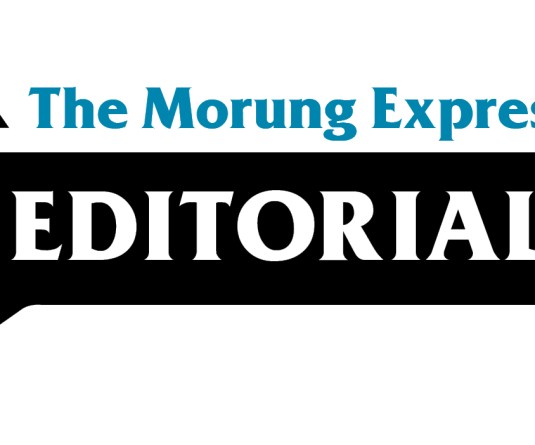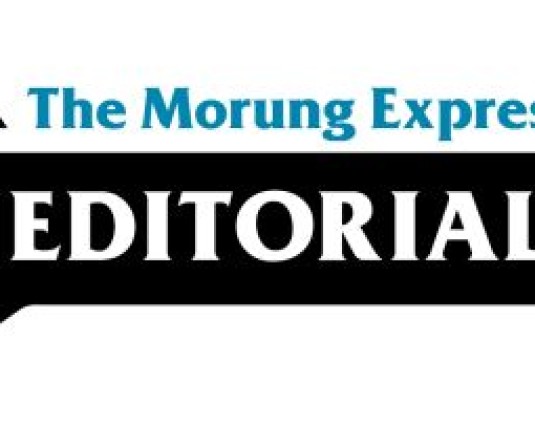
Along Longkumer
Consulting Editor
If ever we as a people need a unity of purpose, the time is right now for the Nagas. Several things are happening around us and on the surface it would seem illogical to connect these events. Take the case of the following: the arrival of the long exiled President of the Naga National Council (NNC) Adinno Phizo to Nagaland; the differences or opposition seen over the question of giving recognition by the State government to some of the Naga tribes from outside Nagaland; the role of the Naga Hoho coming under strong criticism; the resolve to form a common platform among the Nagas of Nagaland under the name Nagaland Tribes Council; public outcry against the various forms of taxation imposed by the different Naga political groups; the uncertainty of the peace process involving the Nagas and the Government of India and lastly the slowdown in the reconciliation process of the various Naga groups facilitated by the Forum for Naga Reconciliation (FNR). The issues mentioned above may not be all similar yet there is an underlying common theme running across all of them. And therefore to succeed as a people it is vital for us to find the much needed cohesion in our political or social missions. We must use whatever opportunity to find synergy and common ground as we tackle multiple and sometimes difficult issues.
Time is running out…FNR
It is true that under the initiative of the FNR, cessation of hostilities has taken place to a large extent as compared to earlier period of bitter factional feud and killings. Not much head-way however seems to have been made on the ambitious ‘national government’, which was proposed and for which a High Level Commission of the three groups- NSCN/GPRN, GPRN/NSCN and FGN/NNC had been formed sometime in August 2011. In a few months time, two years is going to be completed since the top Naga leaders of the three political groups had resolved to push ahead with the formation of one Naga National Government. The reason this is being cited is because the lament of the Naga public over the burden of taxation, which is shaping up into a mass movement, could well be addressed effectively if there is the political will to form this national government, as resolved by the leaders themselves. Perhaps it is time for the FNR to ‘get back to the people’, as it has done in the past, and let the Naga public know the fate of the Naga national government. It is becoming quite evident that the patience of the people is running out.
Also, some Naga commentators have taken note and rightly so of the presence of Adinno Phizo in Nagaland and making the observation that this is a golden opportunity to work towards making the Naga reconciliation process inclusive. This is in line with the resolution made by the FNR at the end of the historic Naga reconciliation meeting at Dimapur on February 29, 2012, whereby it was implored “upon all Naga groups to join Naga Reconciliation: A Journey of Common Hope and to ensure that the reconciliation process become truly inclusive and liberative in its implementation”. FNR should take up this agenda with the existing signatories of the Covenant of Reconciliation (COR) and facilitate talks with the other groups who are yet to join or be included. Time is running out and each passing day only adds to the complexity of our situation. Strange and ironic as it may seem, but more factions have been created ever since the launch of “Naga Reconciliation: A Journey of Common Hope”. As such the FNR should undertake some kind of a midcourse correction otherwise this whole exercise of reconciliation may lead us to nowhere except perhaps more painful experience/s and complications.
Institution Building
As for the future of the Naga Hoho and the newly formed Nagaland Tribes Council (NTC), both have a role to play. The Naga Hoho with whatever credibility and legitimacy crisis it is being faced with, should be strengthened and shaped into a ‘people’s institution of the future whereby it can be the common platform for all Nagas from Myanmar, Manipur, Nagaland, Arunachal Pradesh and Assam to come together. Given its importance, the functioning of the Naga Hoho should not be left only to some few people but a thorough revamp is required to prepare this institution for any future role. As for the NTC, not much is still known about this entity and the role envisaged for itself. However it could play an important role—to act as a safety valve against tribalism and be a catalyst for the much needed peace and trust among the Naga tribes of Nagaland. Hopefully the NTC will also be in a better position to collectively reach out to other Naga tribes beyond Nagaland and in the process strengthen ties and our common resolve as one people.
Working Together
In the challenges that confront us, one of the concerns is that when too many people speak in different voices or work at cross-purposes there is going to be clutter and possibility of creating more fissures from within. This is precisely the weak spot of the Naga people and our history is replete with instances of how we have failed to take care of our problems because we could not find the right way to address them and at the right time. We need cool heads, team spirit and God’s wisdom to guide us through this period. Putting aside whatever differences may exist, the different players must act in unison in the collective interest of the Naga people as a whole. Credit must go to the Action Committee Against Unabated Taxes (ACAUT) under the Naga Council for amply demonstrating that people can indeed work together for a common cause. At the macro level also, we need a viable platform, to bring everyone on board and one that can transcend tribe, region, politics, faction etc. Instead of creating a new structure, can a revamped and restored Naga Hoho play this vital role? All these are food for thought.
(Feedback can be send to consultingeditormex@gmail.com)





